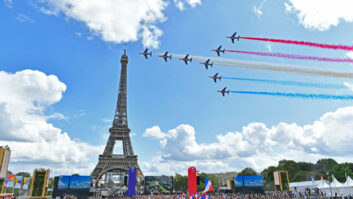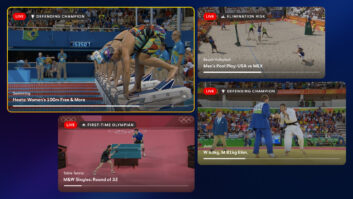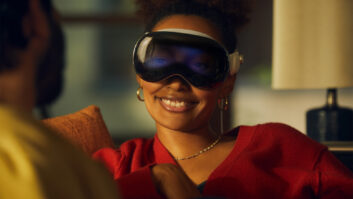The Olympic 3D production will be produced entirely independently of the main 2D operation, putting to rest speculation that the Cameron-Pace Group may be involved as 3D production specialists, writes Adrian Pennington. OBS, the Olympics Broadcasting Services, remains vague on the specific technologies such as rigs, but has named its production partner as Panasonic. It has revealed that its 3D production team will deploy up to three fully equipped OB vans and six separate ENG crews, made up of three crews each. Additionally there will be a 3D operations centre in the IBC (International Broadcast Centre) to receive and distribute signals and to produce a dedicated 3D channel broadcasting 16 hours a day for the Games’ duration and a daily highlights programme as part of the 3D channel transmission. More than 230 hours of 3D will be produced in total. There will be a total of ‘33 true 3D cameras being used for both live and ENG coverage’ states OBS with a limited number of 2D cameras converted into 3D for the live production. The intention is that 75-80% of the coverage will come from native 3D cameras and 25-20% from 2D converted cameras. Live coverage is currently planned for the opening and closing ceremonies, athletics, gymnastics and synchronised diving with possible additional live coverage from canoeing and aquatics (swimming, synchronised swimming, diving and water polo). The ENG crews, armed with Panasonic AG-3DP1 twin-lens camcorders, will provide feeds for the highlights package for sports including basketball, beach volleyball, boxing, equestrian, judo, cycling and wrestling. According to OBS, the main challenge is securing the correct locations at the venues. “The nature of 3D coverage is that it is low and relatively close to the field of play and athletes,” it states. “The tight spaces within each compound have also proved a challenge in terms of accommodating the 3D operation.” The 3D feed will be taken by the BBC and NBC which are among 10 broadcast organisations helping determine the events covered and the transmission schedule. Production resources, excluding those for 3D, include 50 mobile units, including 14 units from UK suppliers (such as Arena TV and Telegenic), and more than 1,000 cameras (up from 900 in Beijing) including 40 Super Slow Motion cameras providing action ranging from 600 to 1000 frames per second. This will produce more than 5,600 hours, in high definition and stored on EVS XStoreSAN technology. All material will be available throughout the Games; in Beijing, material had to be deleted every three days. Audio will be produced in 5.1 Surround Sound with all channels embedded in the HD stream. The OBS team will increase from 150 full time staff to a workforce of around 5,600 people by the start of the Games. This figure includes 1,200 British students who will be trained and paid to be audio assistants, camera assistants, commentary system operators or liaison officers. Production enhancements include the use of virtual graphics in a number of sports including athletics, swimming, and rowing. It will also provide detailed course animations for select sports, making use of GPS tracking to show precise routes, significant course aspects and passing places of interest. In partnership with NHK and the BBC, OBS will also film part of the Games in the Super Hi-Vision format which offers 16 times the quality of HD TV. Planning for London 2012 started soon after it was elected as the host city in 2005. OBS liaised with LOCOG in all areas impacting broadcasting including the competition schedule, location and build of the 42,000 sqm International Broadcast Centre (IBC), logistics and technology. www.obs.es
Olympics 3D to have separate workflow
The Olympic 3D production will be produced entirely independently of the main 2D operation, putting to rest speculation that the Cameron-Pace Group may be involved as 3D production specialists, writes Adrian Pennington.







